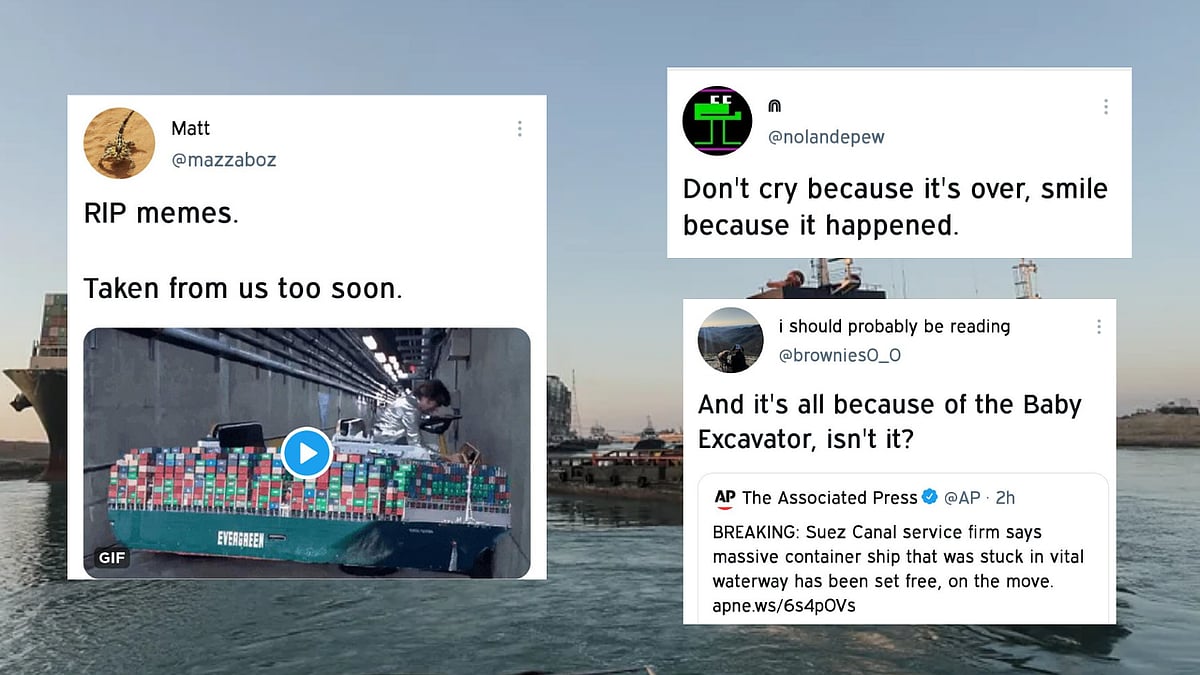EverGiven, a 2,20,000-ton ship, almost 400 metres long, was amongst the most discussed topics lately. The image of an excavator, dwarfed when juxtaposed against the gigantic EverGiven, triggered a meme fest on social media. Everyone saw the mammoth ship blocking the Suez Canal as illustrative of their own problems and how helpless and ill-equipped they were to deal with those.
With more than 300 ships caught on either side of the Suez, it was every supply chain manager’s worst nightmare. Delayed shipments and the cascading effect meant loss of a whopping $9.6 billion per day.
The entire Suez–EverGiven episode - magnitude of the impact, response to the crisis, vulnerability of global trade and role of various actors - holds some valuable lessons for us.
Business environment is unpredictable, stay alert: A tempest in business could be in the form of competition, unfavourable regulation, technological obsolescence, disruptive business models, etc. Little did EverGiven’s crew and the Suez pilot know that the events unfolding over the next few hours could ground the ship, threaten the existence of its owners and disrupt global supply chains.
Big isn’t always better: EverGiven’s size was its undoing. A nimbler and lighter ship could have been navigated out of harm’s way; just as lissome organisations can adapt quickly to a changing environment. But this gigantic ship’s fate was sealed when the sandstorm hit. Recently, we also saw the Airbus 380’s relatively short lifespan - the first A380 commercial flight took to the skies in October 2007 and Airbus announced phasing out of the A380 in February 2019. Reasons notwithstanding, the big magnificent bird had failed.
Never underestimate adversaries: The wind in the Suez Canal was 40 knots when disaster struck. A ship can withstand winds of over 85 knots when in the open ocean; however, the same wind coupled with a sandstorm proved to be EverGiven’s nemesis – it drifted sideways and clogged both sides of the canal. Howsoever small, underestimate your adversaries at your own peril, especially when they play to their strengths. Karsanbhai Patel’s Nirma vs HUL battle which unfolded in the 80s immediately comes to mind.
No effort is small: Abdullah Abdel-Gawad, the 28-year-old excavator operator, felt offended upon seeing the social media memes. This impelled him to work harder – 21-hour shifts over six days, gnawing at the sand, to make a material difference to the rescue effort. Two other excavators that arrived were too petrified to work directly underneath the ship and did some peripheral work instead.
Identify your weakest link and manage risks: Every business has to find its ‘Suez Canal’ and consciously work towards de-risking the ‘passage’. Risk management is about identifying, assessing, prioritising and managing threats to a business, its assets, its capital and its earning potential. These risks could be from uncertainties in the economic environment, legal liabilities, accidents, natural disasters, technology obsolescence, data security and even strategic faux pas by the leadership. There ought to be a risk management plan for mitigating each of these risks.
Manage the conversations: This is not the first time that a ship got stuck in the Suez. However, this time social media amplified the crisis. Media managers worked overtime on behalf of the owners to ‘manage the narrative’. Despite some deliberately disingenuous statements, the real reason for the grounding is unknown. The ship owners, who emerged almost unscathed from the crisis, now risk ‘paying up’ several millions of dollars in compensation, penalties and damages. The real test will be in getting the ship released from the authorities.
Providence is a thing: Just when ‘experts’ thought that it could take weeks to dislodge the ship, there was divine intervention. The full moon brought a spring tide or ‘King Tide’- gravity causing the high tide to be higher and low tides to be lower than normal. This made the crucial difference, allowing rescue teams to re-float the ship. Sheer providence! Look out for it, be prepared to take advantage of it, but don’t rely on it. As Roman philosopher Seneca says, ‘Luck is what happens when preparation meets opportunity.’ Paytm capitalising on the demonetisation opportunity is a classic case.
These lessons apply to all businesses, irrespective of type and size. In fact, some of these lessons are universal and may be relatable in our lives too. The ship may have sailed away since, but it left these stirring lessons for us. Are we up to them?
(The author is a senior professional in the corporate sector and writes on varied topics that catch his fancy. The views expressed here are his own.)








